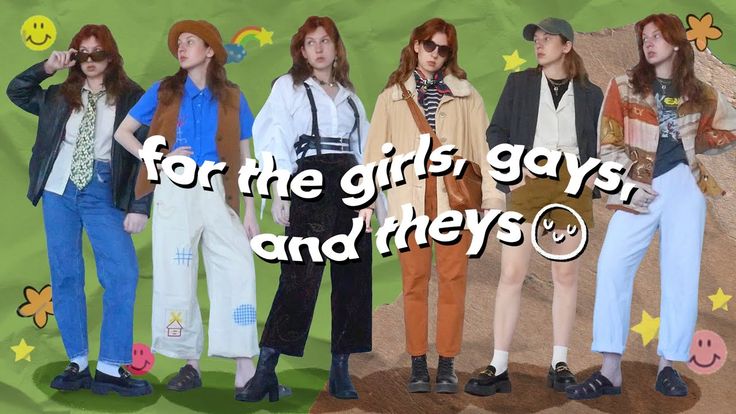The idea of clothing being inherently gendered is a relatively modern construct. Throughout history, many cultures featured garments that were not divided by gender. Robes, tunics, and draped clothing were common attire for all genders in ancient civilizations. It was only in the modern era that strict distinctions—like dresses for women and suits for men—became dominant.
In recent decades, however, fashion has begun to break down these barriers. Designers such as Jean Paul Gaultier, Yohji Yamamoto, and Vivienne Westwood challenged traditional norms by featuring men in skirts or women in tailored suits. These early trailblazers laid the groundwork for the gender-neutral fashion movement we see flourishing today.
With the rise of conversations around gender identity and fluidity, consumers—especially Gen Z and millennials—are looking for fashion that reflects their values. A growing number of people don’t want to be told what to wear based on gender. Instead, they seek garments that make them feel authentic, confident, and seen.
Why Gender-Neutral Fashion Matters

The significance of gender-neutral fashion extends far beyond design. At its core, it’s about acceptance, equality, and freedom. When fashion steps away from gendered expectations, it opens doors for individuals to express themselves without limitations or judgment.
One of the primary motivations behind this movement is inclusivity. Traditional fashion categories often leave nonbinary and gender-nonconforming individuals feeling excluded. Many are forced to choose between two limited categories—men’s or women’s—neither of which may align with their identity. By removing these labels, gender-neutral fashion creates space for everyone.
Moreover, embracing gender-neutral designs can also reduce pressure on men and women alike. Men can explore softer silhouettes, brighter colors, or accessories without stigma. Women can wear structured tailoring or traditionally “masculine” cuts without being seen as trying to assert dominance or rebellion. It’s about normalizing variety in how we dress, regardless of gender expectations.
How Designers and Brands Are Leading the Way
Many forward-thinking designers and fashion houses have embraced the concept of gender-neutral collections. High fashion has seen a surge in unisex designs walking the runway, as well as entire lines dedicated to neutral styles.
Luxury brands like Gucci and Balenciaga have showcased gender-fluid pieces in their recent collections. Meanwhile, independent labels such as Telfar, Collina Strada, and Gypsy Sport are building reputations based on inclusivity and innovation. These brands are not simply making “unisex” clothing—they’re reimagining how garments are designed, styled, and marketed.
Retailers are also evolving. Major platforms like ASOS, Zara, and H&M have introduced gender-neutral lines or merged men’s and women’s sections online. Some brands are eliminating gender categories altogether, allowing shoppers to browse freely without being funneled into gendered segments.
This shift isn’t limited to adult fashion. Children’s clothing lines are also embracing neutral designs, recognizing that identity starts forming at a young age and should not be constrained by color codes or gender stereotypes.
Beyond the Closet: The Cultural Impact
Gender-neutral fashion isn’t just about clothes—it’s part of a broader cultural conversation. It challenges how we define identity, beauty, and normalcy. Fashion, as a form of art and expression, has the power to influence public perception. When celebrities, influencers, or public figures embrace gender-fluid styles, it sends a powerful message of acceptance and progress.
Icons like Billy Porter, Harry Styles, Janelle Monáe, and Indya Moore have become symbols of this change, using their platforms to advocate for a more inclusive world—often doing so through bold, boundary-breaking fashion choices. Their visibility helps normalize diverse expressions of gender, inspiring others to embrace their own identities.
Media representation also plays a crucial role. Campaigns and editorials featuring nonbinary models or diverse body types are becoming more common, shifting the narrative toward inclusivity and relatability. It signals to consumers that beauty and fashion are not limited to traditional ideals.
Schools, workplaces, and public institutions are also influenced by these cultural changes. Dress codes are becoming more flexible, and there is growing awareness about respecting individual expression. As gender-neutral fashion becomes more mainstream, it contributes to a more accepting and empathetic society.
The Business Case for Gender-Neutral Fashion
Beyond its cultural significance, the rise of gender-neutral fashion also presents clear economic benefits. As consumer behavior evolves, brands that adapt are more likely to succeed in the competitive retail landscape.
According to market research, Gen Z is the most gender-fluid generation to date. They value diversity, authenticity, and social responsibility. They are more likely to support brands that reflect their values and offer inclusive experiences. For fashion companies, this means moving beyond token representation and genuinely integrating inclusivity into design, marketing, and customer service.
Gender-neutral clothing also offers operational advantages. By producing garments that cater to a wider audience, brands can simplify inventory, reduce overproduction, and create more flexible sizing options. It’s not only more inclusive—it can also be more efficient and sustainable.
Sustainability is another critical factor. Many gender-neutral brands adopt ethical manufacturing practices and focus on timeless, versatile designs that transcend trends. These clothes are made to be worn by anyone, for longer, and in more ways—reducing waste and promoting mindful consumption.
The Future of Fashion is Fluid
Fashion is in the midst of a transformation—one where personal expression, identity, and comfort take precedence over outdated norms. The rise of gender-neutral fashion is not a temporary trend; it’s a reflection of evolving social values and a deeper understanding of individuality.
As designers innovate, retailers adapt, and consumers push for authenticity, we can expect to see even more integration of gender-neutral ideas in mainstream fashion. It won’t be about eliminating gendered clothing, but rather expanding options so everyone can choose what makes them feel like their truest self.
The future of fashion is not just about style—it’s about freedom. Freedom to wear what you love. Freedom to express who you are. And most importantly, freedom to exist without labels.
